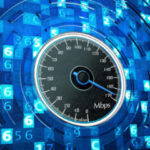Not sure about beacons and how they should — and shouldn’t — be used at events? The Global Beacon Alliance (GBA), launched this week at IMEX, can help.
Founded to produce standards, governance, and credible information on the effective use of beacons and other location-based technology in the global events industry, GBA is the brainchild of Alistair Turner, managing director of U.K.-based EIGHT PR & Marketing, and Toby Lewis, CEO of U.K.-based event-management company The Live Group. The alliance was developed in partnership with PCMA and international venues, destinations, and app providers.
Turner shared the following tips with Convene:
What are beacons and how do they work?
A beacon is a fixed transmitter that emits continuous or periodic signals that allow it to locate and “talk” to smart devices. Beacons indicate their presence so that enabled devices can locate them.
What are their potential uses for the meetings industry?
Beacons, alongside Wi-fi networks, are designed to help make attendees’ smartphones more productive — for them as well as for meeting organizers, by:
- tracking attendee whereabouts and safety
- providing information about — and evaluations for — events
- assessing attendee footprints and dwell times
- adding enrichment and engagement to event experiences
- offering helpful and targeted audience information
- igniting and supporting other event technologies
- helping to track and find MIA VIPs and speakers!
Is there a downside to beacons? What are some examples of poor industry practices?
Beacons have become more controversial as they enter the events and marketing industries. This is mostly because of misuse, but misunderstanding how to use them also is prevalent. Here are six areas of concern:
1. Privacy. The biggest issue with beacons is the need to allow a smartphone to access information and to “trade” information with the business behind the beacon — anything from sharing data to allowing others to know your location. This is an area that needs to be handled carefully with providers.
2. Push notifications. It’s common for smartphone users to object to push notifications (when a beacon enables an offer to be fired into a smartphone as it gets closer to a target or promotion). The best practice is to ensure close targeting of messages and to monitor overuse in the same way good marketers monitor direct mail or advertising.
3. Permission. For beacons to work with smartphones, the owner must give permission, usually through an attendee-management or event app. Not all attendees want or allow this, which means that not everyone will be engaged by the beacon. While this may be the case, capturing great data does not require 100-percent involvement. It’s important to provide delegates with the right incentives for them to engage rather than forcing them into it.
4. Technology dating, A major reason for not adopting the hardware for beacons is the fear that they will go out of date and need to be replaced — a large financial outlay for short-term value. The adoption of beacons has just begun; they have a shelf life of approximately five years and cost about $5 — a sustainable model for the industry.
5. Battery life. Although blue-tooth is a low-energy technology that doesn’t drain a smartphone battery as much as Wi-Fi and 4G connections, its impact on battery life should be shared with attendees. Adding additional charging stations on site is one way to address this challenge.
6. Unfavorable data. Some exhibition organizers don’t want to share foot traffic data for fear that they will lose booth sales, or they worry that sharing feedback will offend speakers. This is not best practice and does not move the industry forward.




